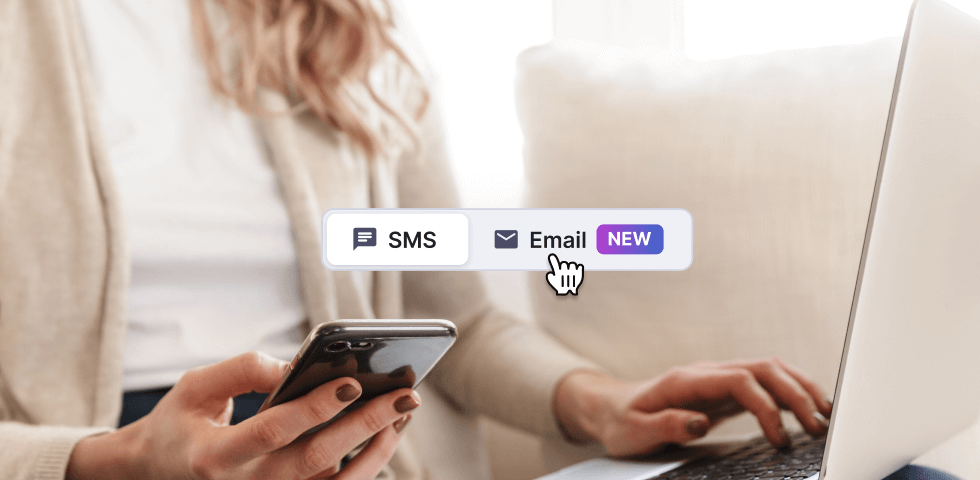
Email and SMS marketing each bring their unique strengths to the table, but they’re at their most powerful when used together.
SMS delivers speed, urgency, and high open rates that drive real-time engagement, while email enables rich content, detailed product storytelling, and long-term customer nurturing. Instead of choosing one over the other, brands can unlock better communication by coordinating the two.
This article explores when to use each channel, how to combine them in integrated workflows, and how Textmagic can help simplify your journey towards a unified marketing strategy. Let’s get into it.
SMS marketing vs Email marketing
SMS marketing involves sending short message campaigns to clients who opt in to receive them. Because it doesn’t require internet access and reaches users instantly, it’s a valuable tool for retail and e-commerce brands aiming for timely mobile-first engagement.
According to our latest survey, SMS open rates are around 92%, meaning only 1 out of 10 consumers won’t read them. Plus, there are over 6 billion smartphone subscriptions currently in use, and the numbers keep growing yearly.
Email marketing is a type of direct marketing that delivers in-depth, branded messages to a subscriber’s inbox. It’s ideal for long-form storytelling, loyalty campaigns, product showcases, and personalized offers.
Email open rates hover around 42%, which is lower than SMS. Still, around 4 billion people use email worldwide. And when businesses combine it with SMS, it helps them retain 89% of customers, compared to the 33% converted by companies that only leverage one of these two channels.
Therefore, a combined email and SMS marketing strategy provides complete coverage across the purchase journey, helping brands improve conversion rates, reduce cart abandonment, and enhance post-purchase communication.
SMS marketing use cases
SMS is a fast and direct channel for engaging with customers in real time. Below are its key use cases.
- Back-in-stock alerts: Notify subscribers when a popular or previously unavailable item is available for purchase again.
- Limited-time promotions or flash sales: Text-exclusive discount codes encourage quick action.
- Order and shipping updates: Keep customers informed about their upcoming deliveries in real time.
- Two-way support communication: Respond to inquiries with quick and conversational text replies.
- Event-based triggers: Send birthday offers, loyalty milestones, or restock alerts to add a personal touch.
- Customer satisfaction surveys: Follow-up surveys post-purchase will help you gather feedback and improve service.
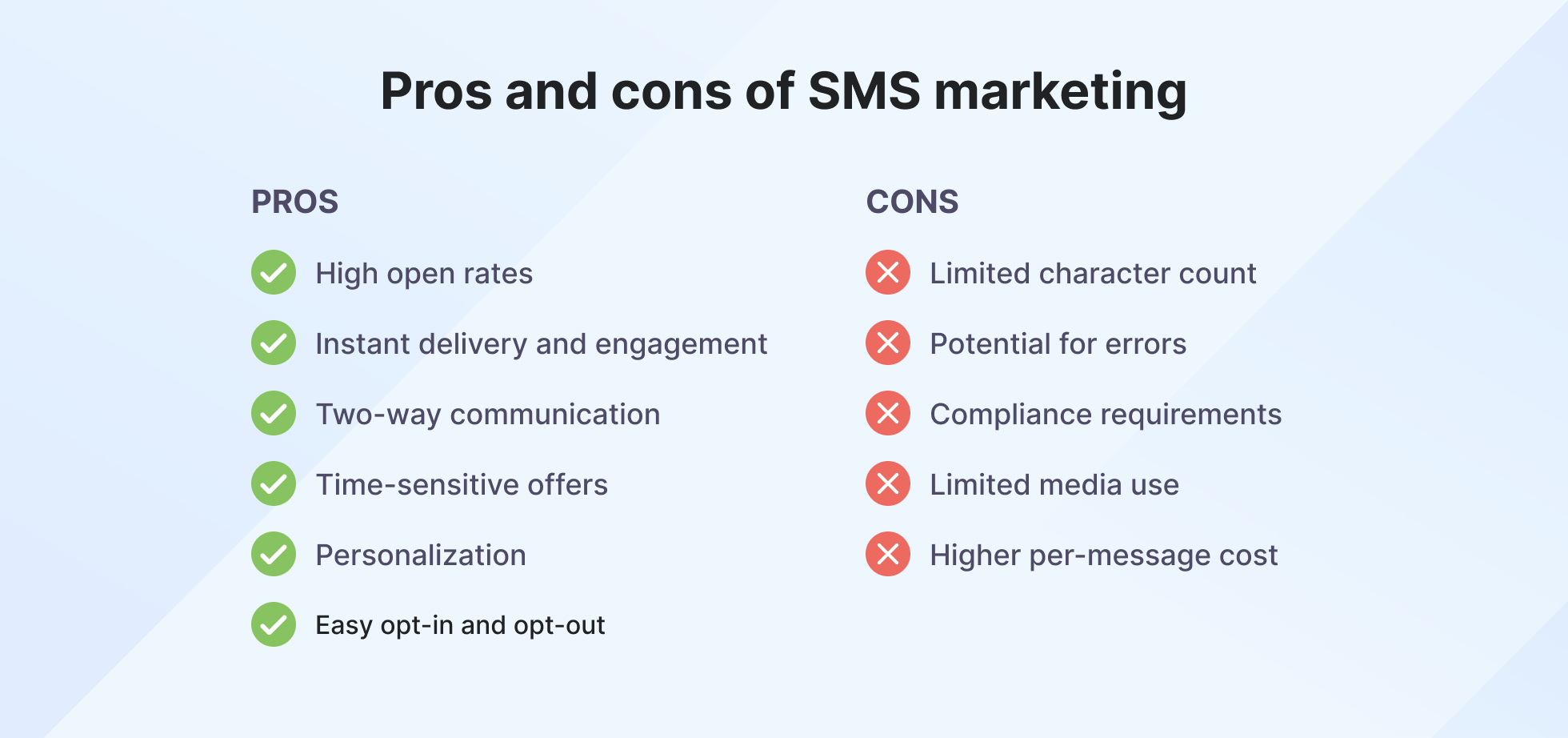
Email marketing use cases
Email is ideal for brand storytelling and personalized messages, allowing you to send longer-form content to your subscribers. Here are its main use cases.
- Cart abandonment reminders: Re-engage users who leave items in their cart with personalized, visual reminders.
- Product launch announcements: Showcase visuals, features, and pricing tiers.
- Welcome sequences: Onboard new subscribers with brand storytelling and curated recommendations.
- Automated upselling and cross-selling: Recommend complementary products post-purchase.
- Seasonal lookbooks and content-driven newsletters: Build engagement through design and detail.
- Customer feedback collection: Request reviews or survey participation after a delivery.
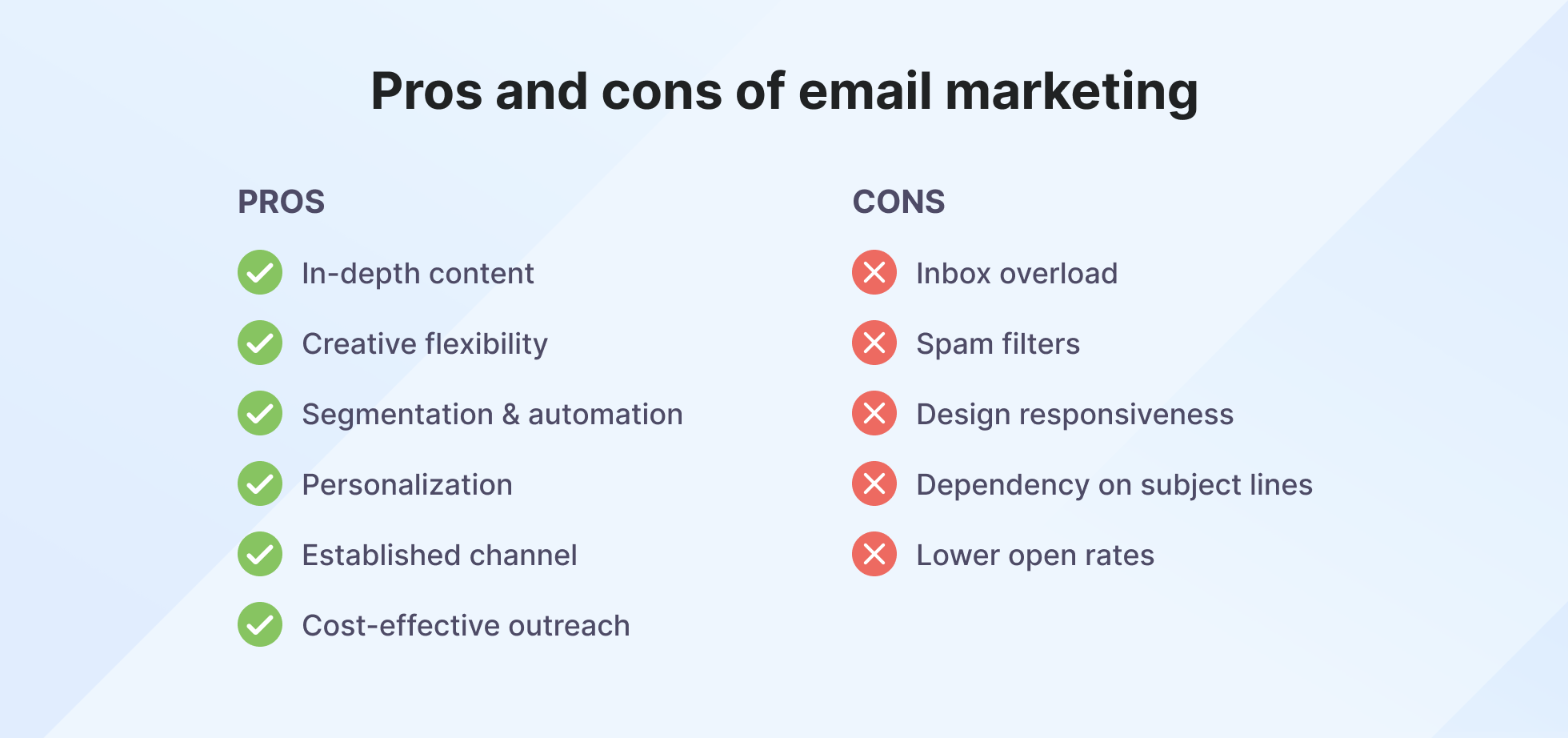
Email and SMS marketing comparison table
How do SMS and email stack up side by side? This table breaks down their differences across key marketing factors to help you plan an integrated communication strategy.
| Aspect | SMS Marketing | Email Marketing |
| Open rates | High (up to 92%) | Moderate (around 42%) |
| Content type | Short-form text, 160 characters | Rich media, detailed content |
| Personalization | Basic (name, cart info) | Advanced (behavioral targeting) |
| Cost | Higher, per message | Lower, per bulk email |
| Ideal purpose | Urgency, alerts, reminders | Storytelling, education, nurturing |
| Engagement window | Short-term, real-time | Long-term, relationship building |
| Compliance | Heavily regulated, opt-in required | Regulated, opt-in required |
5 Examples of integrated email and SMS marketing flows
Integrating your brand’s email and text marketing flows can help you create seamless multi-touchpoint experiences that guide customers through each stage of their journey and keep them engaged.
Following a well-structured flow like the ones below not only increases engagement and conversion rates but also helps you avoid being flagged as spam by ensuring your messages are timely, relevant, and compliant across email and SMS alike.
1. Product launch campaign
Deploying a well-timed email and SMS campaign is a great way to build anticipation and drive early sales for a new product or collection. You can create one in just a few simple steps.
- Step 1: Send an SMS teaser or countdown 24 hours before launch.
- Step 2: On launch day, deliver a branded email with product visuals, descriptions, and call-to-action buttons.
- Step 3: Send a follow-up SMS 48 hours later promoting limited stock or early reviews.
How it works: Email handles visual storytelling and reputation building for the product, while SMS adds urgency and boosts conversion rates.
2. Flash sale promotion
Promoting your flash sale with a short-term email and SMS marketing campaign can help you maximize traffic and purchases on the spot. Follow the steps below to drive results.
- Step 1: Announce the sale via SMS with a compelling call-to-action and time limit.
- Step 2: Send an email immediately afterward with product links, coupon codes, and promotion duration info.
- Step 3: Use SMS again before the sale ends as a last-chance reminder.
How it works: SMS ensures instant visibility and converts undecided buyers, while email supports product discovery through rich content.
3. Post-purchase engagement
Implementing a post-purchase engagement email and SMS flow will help you improve customer retention and encourage repeat purchases in the long run. Here’s how to do it, in a nutshell.
- Step 1: Send an SMS confirmation immediately after the transaction.
- Step 2: Follow up with an email containing thank-you messaging, product tips, and upsell suggestions.
- Step 3: Send another email with a discount or review request a week later.
How it works: The sequence reinforces satisfaction and keeps your brand top of mind by combining the timeliness of SMS with strong email messaging.
4. Loyalty program
A loyalty program not only celebrates milestones but also strengthens customer relationships and increases repeat purchases. Here’s a simple one that combines email and SMS.
- Step 1: Send an SMS notification when a customer reaches a loyalty milestone or earns a reward.
- Step 2: Follow up with an email highlighting their loyalty status, reward details, and suggestions for redeeming or earning more points.
- Step 3: Send a final SMS reminder before reward expiration to prompt action.
How it works: SMS provides real-time nudges while email builds excitement and explains value, leading to better engagement and brand affinity.
5. Abandoned cart recovery
An abandoned cart recovery email and SMS marketing flow can prevent lost sales by reminding customers to complete their purchase. Here’s a simple one you can try:
- Step 1: Send an email 30–60 minutes after cart abandonment with product images, a personalized message, and a gentle reminder to complete checkout.
- Step 2: Follow up with a promotional SMS if the email is not opened within 6 hours.
- Step 3: Send a second email 24 hours later with a time-sensitive offer or limited stock alert.
How it works: Email allows for rich product presentation, while SMS offers a timely follow-up that re-engages customers on the go.
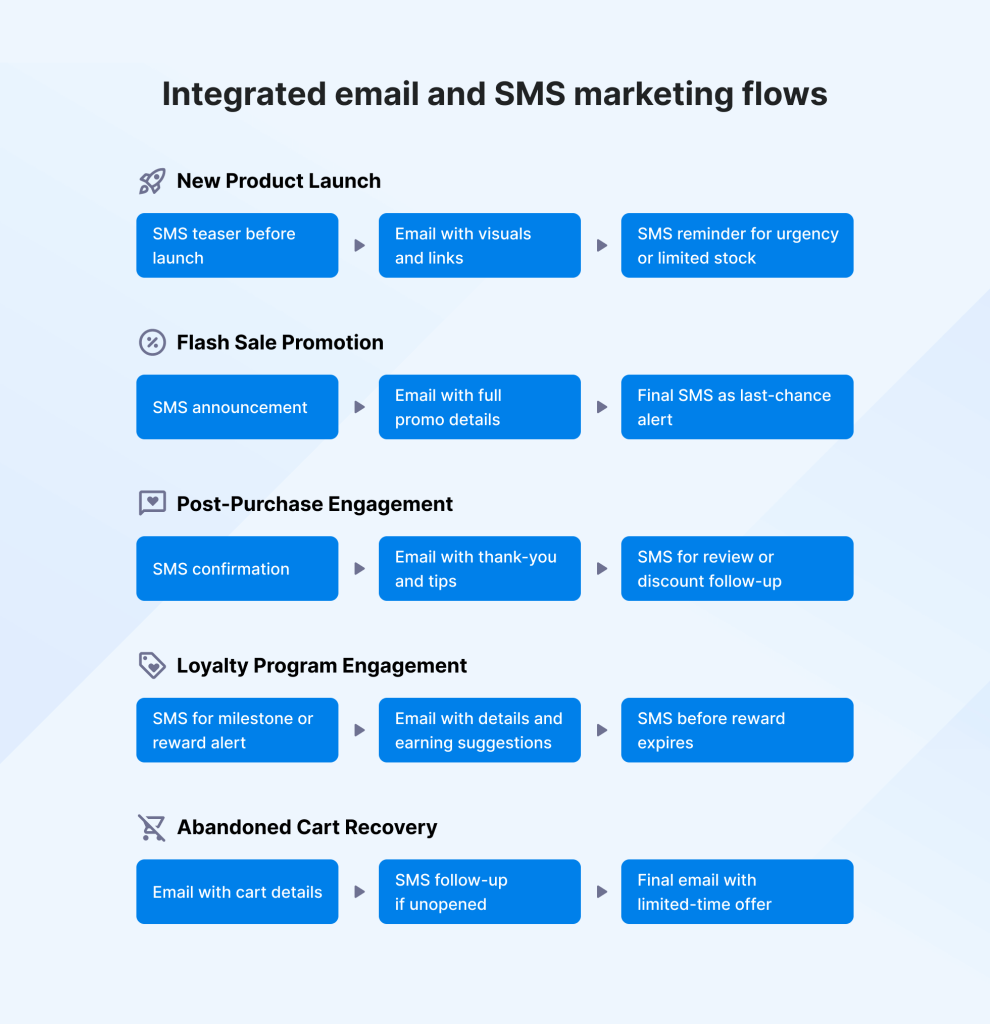
How to unify your email and SMS marketing strategy
Creating a unified strategy with email and SMS allows marketers to maximize impact through sequencing, targeting, and content delivery. Textmagic is an SMS and email marketing platform that equips e-commerce and retail teams with an integrated platform to send, schedule, automate, and analyze across channels.
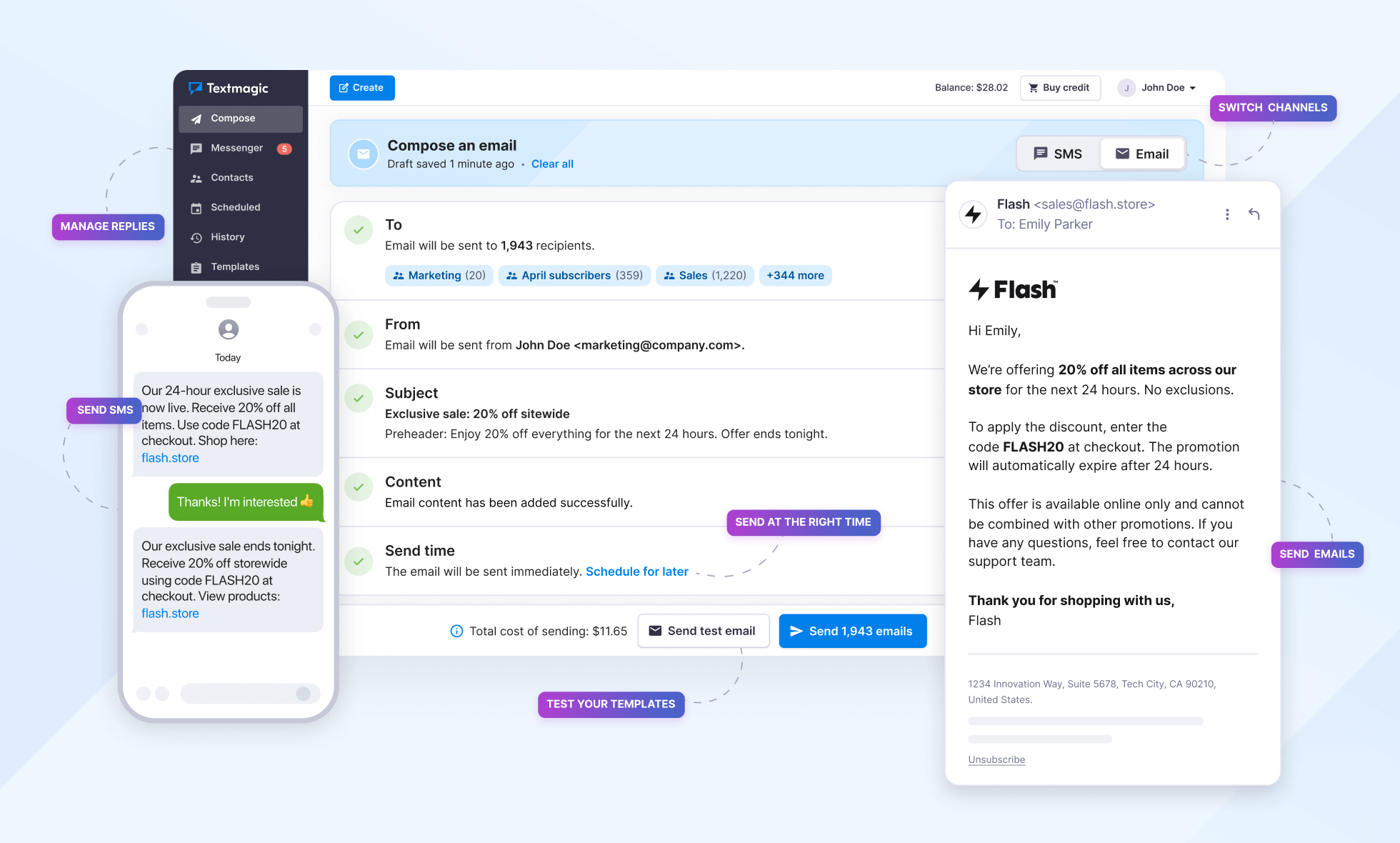
Here are some simple steps you can follow inside the Textmagic interface to create a cohesive email and SMS marketing approach.
Segment your audience
Use the Contacts section in the Textmagic dashboard to segment your audience. Group your subscribers by interests, location, order history, or behavior to send them email and text marketing campaigns that align with their interests.
Keep branding consistent
Use Textmagic’s Templates feature to prepare messaging variations per channel. Assign email for detailed campaigns like product launches or newsletters, and texts for real-time alerts or reminders. This will allow you to reuse proven templates to keep communication consistent and adequate.
Templates will also help you ensure tone, CTAs, and styling are aligned across SMS and email. Saving branded components like headers, taglines, and links keeps your messaging uniform, even across automated workflows.
Time messages strategically
Textmagic allows you to schedule your email and SMS campaigns so that they reach the right audience at the right time. Select the proper Send time in the email campaign builder, or click on Schedule message for text blasts.
The right time can be subjective depending on your audience’s country, age, and other factors. Still, a good rule of thumb is to send your campaign in the morning and early afternoon, particularly from Tuesday to Thursday.
Measure and iterate
In the Textmagic app, you can view real-time performance KPIs for email and SMS campaigns. Check SMS and email deliverability, open rates, click-throughs, bounce rates, and replies, all under one roof. Adjust your strategy based on collected data to ensure your marketing efforts aren’t in vain.
Start sending smarter campaigns today
Email and SMS are no longer separate channels to choose between; they’re tools you use together. Textmagic’s all-in-one platform makes managing and optimizing both under one roof easier than ever.
Unify your business communication with Textmagic
Deploy powerful, personalized email and SMS campaigns from one easy-to-use platform.
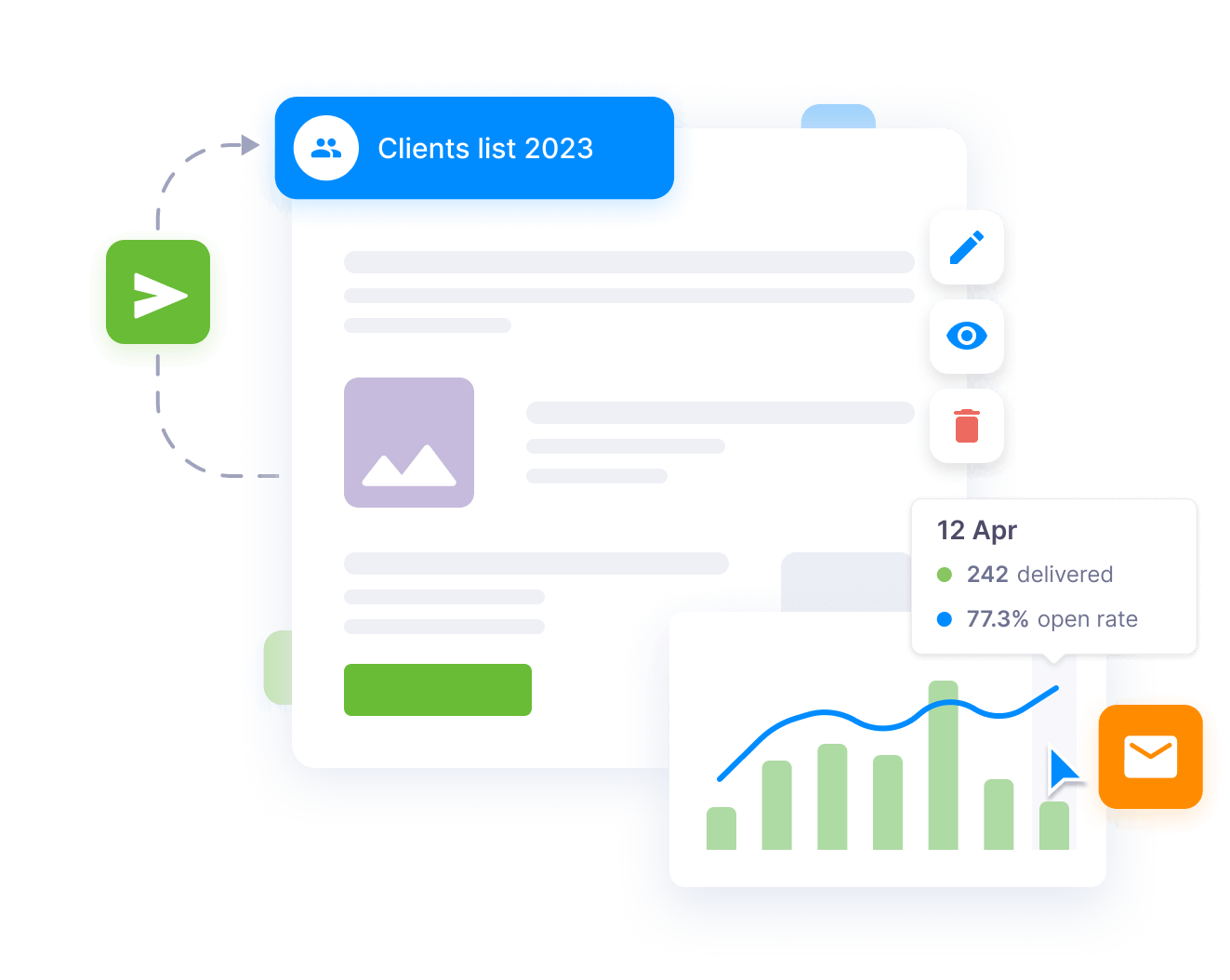
By aligning texting and email’s strengths, you can deliver timely, engaging, and personalized communication that resonates with your audience and drives measurable results. Start integrating the two with Textmagic today to elevate your marketing impact.
Frequently Asked Questions (FAQs)
No. Each has its strengths. SMS is ideal for urgency and quick reads, while email delivers in-depth content and visuals. Used together, they cover all stages of the customer journey.
SMS marketing delivers short, text-only messages to phones, perfect for fast engagement. Email marketing supports longer, media-rich content for storytelling, branding, and newsletters.
Texting is faster, more direct, and typically gets higher open rates. People tend to check texts more frequently, making it great for time-sensitive information.
SMS is faster in terms of both delivery and engagement. Messages are delivered instantly and typically read within minutes, making it ideal for immediate communication.
Yes! With Textmagic’s Email Campaigns feature, you can send both types of messages directly from your unified dashboard.
Related articles
O2O commerce for retail: Bridging online and offline experiences
O2O (online-to-offline) commerce has become a defini...
Top 15+ customer engagement platforms to leverage in 2025
Ever wondered why some businesses seem to effortless...
How to respond to negative reviews and win back customers
Negative feedback might be the starting point of a p...
20 Contact segmentation ideas to save hours on follow-ups and reminders
Segments in Textmagic help you skip the repetitive w...
SMS solutions for schools: Improve communication with parents, students, and staff
SMS for schools is a simple, reliable way to keep yo...




